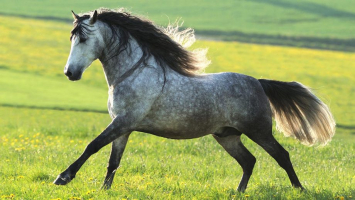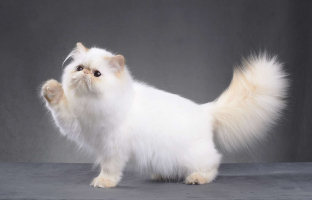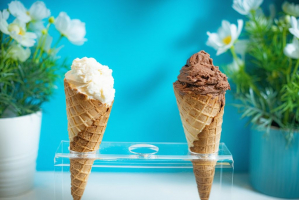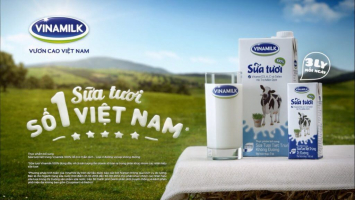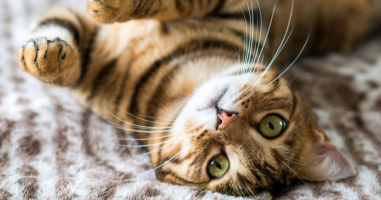Top 10 Most Affectionate Rabbit Breeds In The World
The animal world is extremely diverse and rich. Some animals are impressed by their distinctive appearance or personality. For example, the rabbit is an ... read more...extremely cute and loved animal. Let's find out with Toplist the most affectionate rabbit breeds in the world!
-
One of the most affectionate rabbit breeds in the world is the Lionhead Rabbit. Even though the French Federation of Cuniculture does not acknowledge it, the Lionhead rabbit has its origins in France and Belgium. It is said to have been created by breeders who crossed a miniature Swiss Fox with a Netherland dwarf in an effort to create a long-coated dwarf rabbit. Wool developed around the head and on the sides as a result of a genetic mutation that occurred as a result. The "mane" gene is now a common name for this gene. Since the mane gene is distinct from the gene that causes wool coats in wooled rabbits, there are numerous more tales that are similar to this one, such as the Lionshead being produced from a Netherland Dwarf and a Jersey Wooly, but none of them have been verified.
The mane is often thick, silky, and woolly with obvious "crimping." A Lionhead can have either a single mane (one mane gene) or a double mane (two mane genes), depending on how many genes it receives from each parent (one mane gene). When a rabbit is born is the only time you can determine whether it has a single mane or a double mane. A single mane Lionhead will first resemble a regular rabbit, whereas a double mane Lionhead will have a distinct V shape around its skirt/flanks. Since then, a variety of circumstances, such as self- or other-inflicted mane biting and matts, have influenced how much mane each person really ends up having.
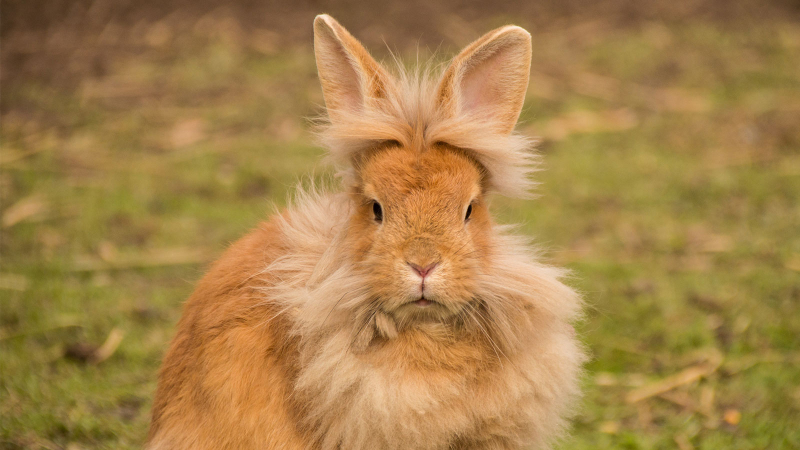
Photo: animals.howstuffworks.com 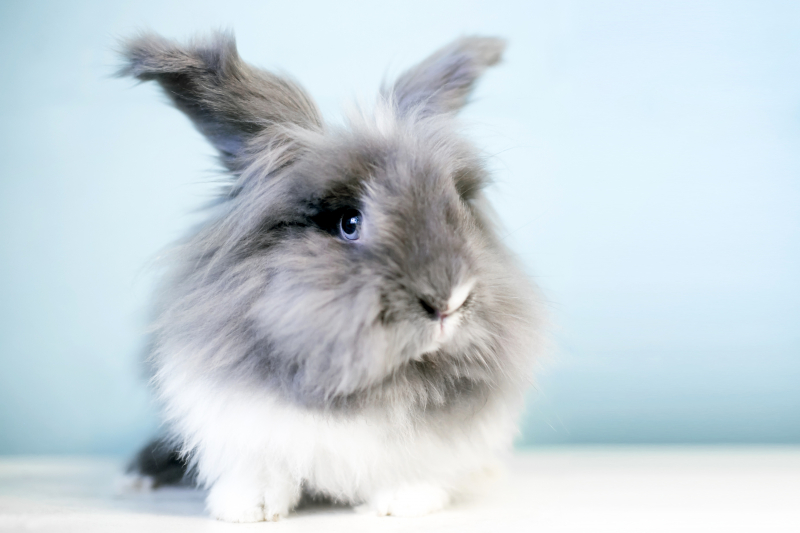
Photo: small-pets.lovetoknow.com -
The American Rabbit Breeders Association approves of the domestic rabbit breed known as the Mini Lop. It is distinct from the Miniature Lop breed that the British Rabbit Council recognizes (BRC). The Dwarf Lop breed, which is approved by the BRC, is distinct from the Mini Lop (US) and Miniature Lop (UK). The Mini Lop and other small rabbit breeds like the Dwarf rabbit have many similarities.
At a German National Rabbit Show in Essen, Germany, in 1972, Bob Herschbach made the discovery of the Mini Lop breed, then known as a Klein Widder. The German Big Lop and the little Chinchilla were the ancestors of these original Mini Lops. Originally, these two kinds were white and agouti.
German lops were huge and slender with thick ears, weighing around 3.6 kg. In 1972, Herschbach, a proponent of the Mini Lop, produced the first Mini Lop offspring in the country primarily by mating an agouti lop couple with a white female lop. Their very first lops were all one hue. Broken hues were introduced in a second generation. They started to develop a Mini Lop with a high grade of attributes as a consequence of the breeding process.
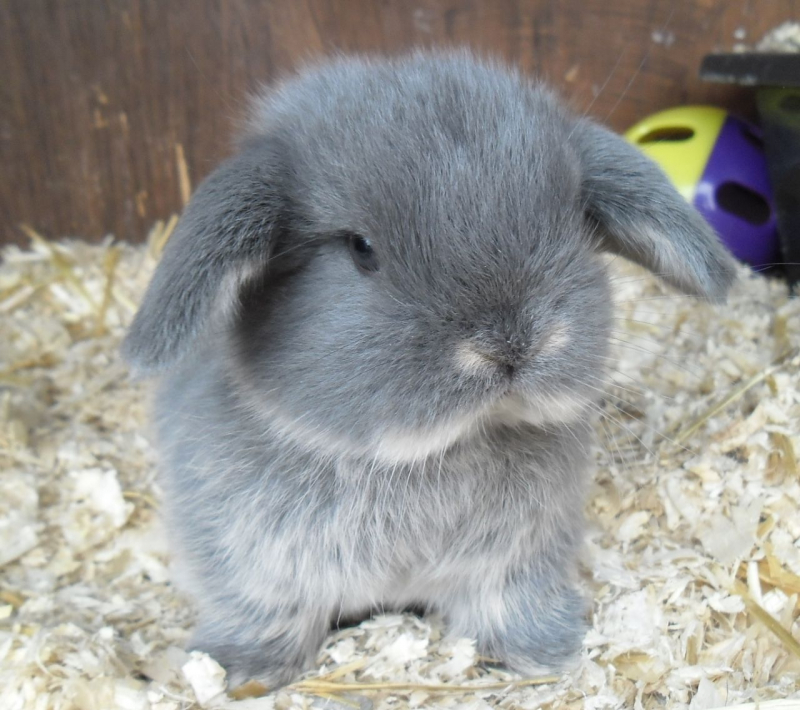
Photo: tthme.com 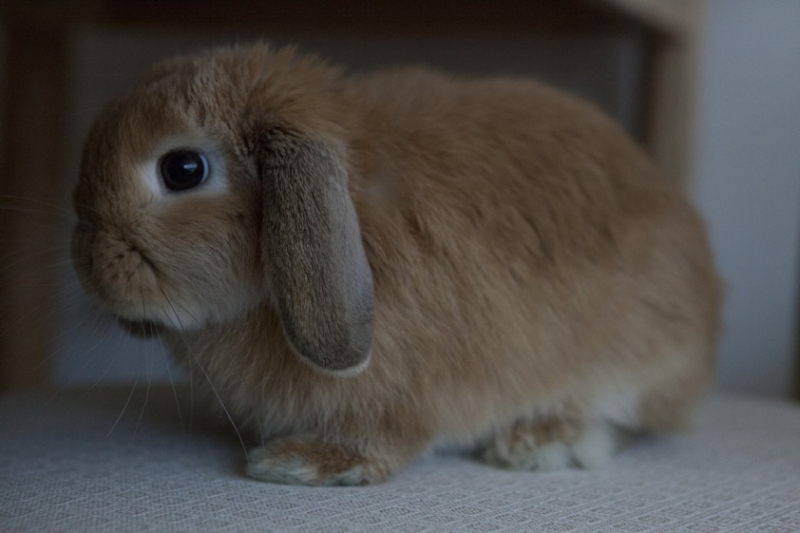
Photo: wikipedia -
The next on the list of the most affectionate rabbit breeds in the world is the Harlequin a vibrant breed of rabbit that is French in origin. It is a breed whose body form and fur are secondary to colors and patterns. A normal Harlequin should weigh between 6.5 and 9.5 pounds, with bucks (males) weighing between 6.5 and 9 pounds and does (females) between 7 and 9.5 pounds.
The classic Harlequin is made up of a mixture of white or orange and black or another color. It should be evenly colored in both hues, with the ideal head coloration being a blend of the two. The Japanese are noted for their use of orange. The intelligent, amiable, and amusing Harlequin rabbit. The rabbit can reply to its own name and is even litter box trained, is like most breeds. They are cordial.
There are two varieties of harlequin rabbits: Japanese and Magpie. While Magpie Harlequins are typically white (instead of orange) and either black, blue, chocolate, or lilac, Japanese Harlequins are typically orange and either black, blue, or lilac. The head, ears, feet, and body of a "ideal" harlequin will be split between the two hues. The two hues appear to be separated by a perfect stripe. Both orange and white bellies on harlequins are acceptable for exhibiting purposes.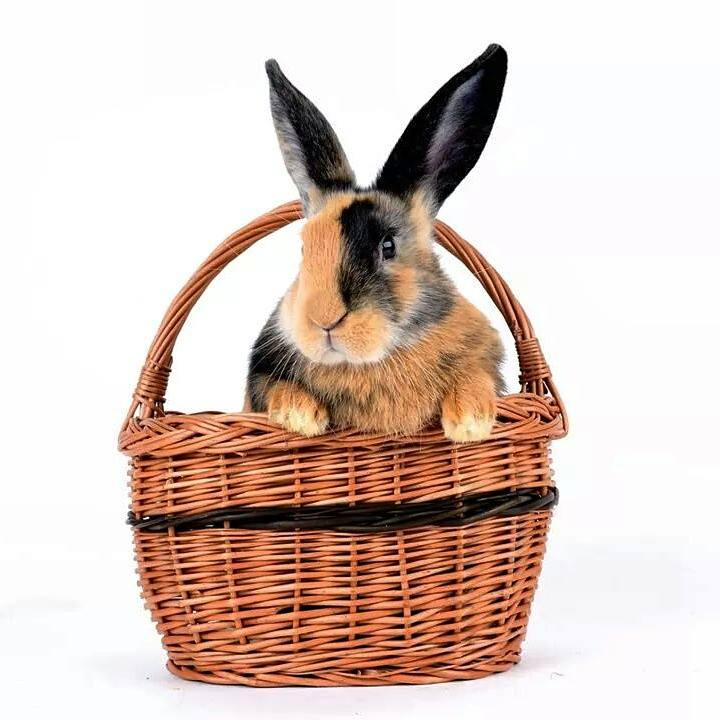
Photo: facebook 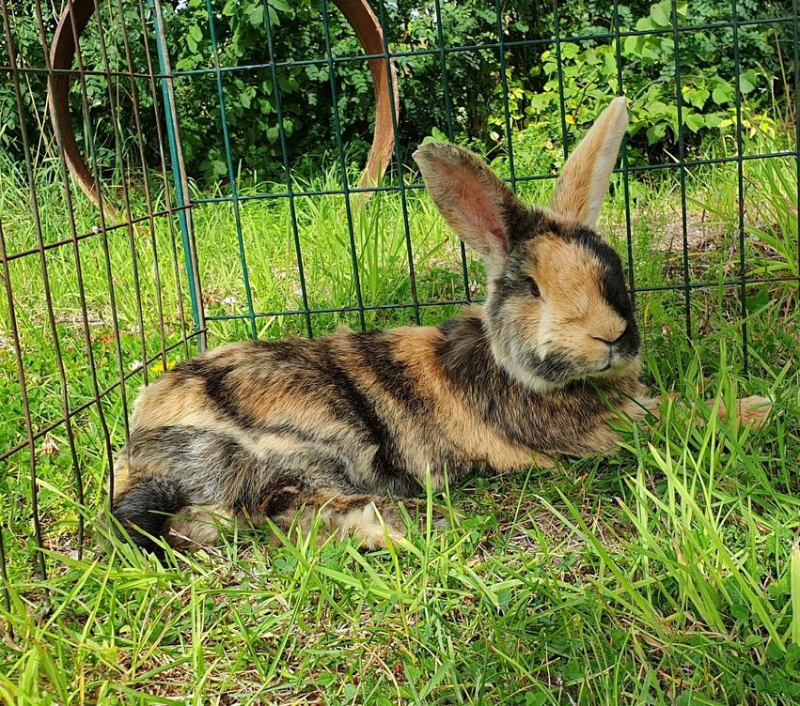
Photo: facebook -
The Polish rabbit is a small domestic rabbit breed that is frequently raised by fanciers and frequently displayed at rabbit competitions. The Polish rabbit, despite its name, probably originated in England rather than Poland. The breed known as Polish in the UK is also known as Britannia Petite in the US. In the UK, there is no information on the breed known as Polish.
Prior to the 1950s, the majority of Polish rabbits in the US had white coats and either red or blue eyes. A real albino is white with ruby eyes. The blue-eyed white is not a true albino but carries the white gene of the Vienna breed. Rabbit clubs have accepted colored Polish variants since the 1950s. The American Rabbit Breeders' Association first identified a black and a chocolate hue in Polish rabbits in 1957. The blue variety was acknowledged in 1982, and the shattered variety received approval in 1998.
The American Polish rabbits, especially the bucks, are often relaxed and amiable. If the does are not spayed, they may become aggressive. When handling rabbits, children should constantly be watched to make sure the animal is not unintentionally hurt. When left outside of their cage, rabbits can be readily trained to accept a harness and leash as well as to use a litter box. It is essential to "rabbit-proof" a space where a rabbit is allowed to roam freely. Rabbits love to chew on electrical cables, baseboards, and carpets.
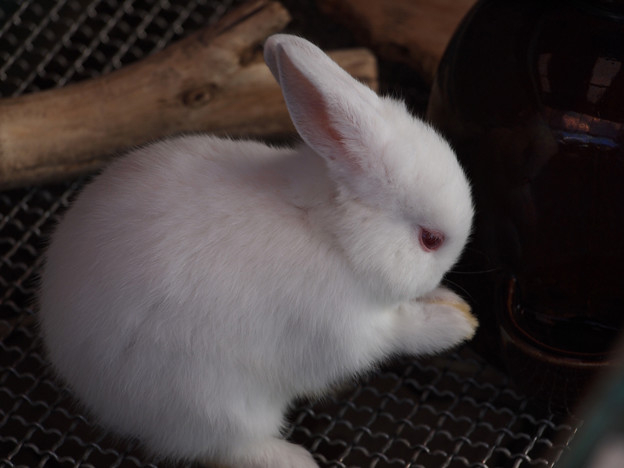
Photo: wikipedia 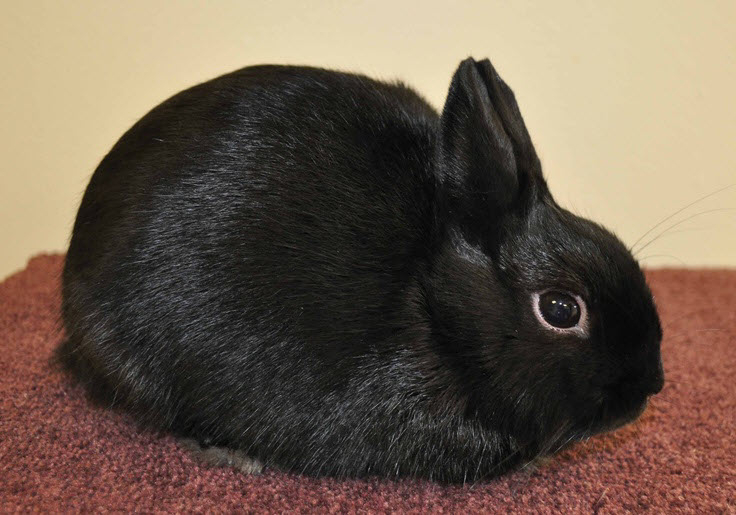
Photo: tthme.com -
One of the kindest, smartest, and gentlest rabbit breeds in the world is the Rex. It is incredibly simple to manage due to its endearing nature. Its body is small and compact, making it a mini rabbit. Its head is short and rounded, and it has a button nose. The eyes are black, and the nose is gray. A Rex Rabbit's forehead will become the shape of a heart if it is in love.
One of at least nine domestic rabbit breeds is referred to unofficially as a "rex rabbit." One such breed is the Rex, which is acknowledged by both the British Rabbit Council and the American Rabbit Breeders Association (ARBA) (BRC). Below is a list of several modern-day rex rabbit varieties. Rex rabbit breeds must be distinguished from the three varieties of rex rabbit fur for which they are famous. A species of rabbit known as the Rex has soft fur that is frequently characterized as having a velvety texture.
The Standard Rex breed is the result of many genes. ARBA and the British Rabbit Council uphold the breed's definition (BRC). Phenotype alone serves as the definition. Weight, color, coat texture, and length are some of the gross exterior characteristics used to identify the rabbit. The coat attributes are the most important of these characteristics to fanciers and the fur trade. This breed can jump up to three feet in the air and has a low to moderate degree of energy.
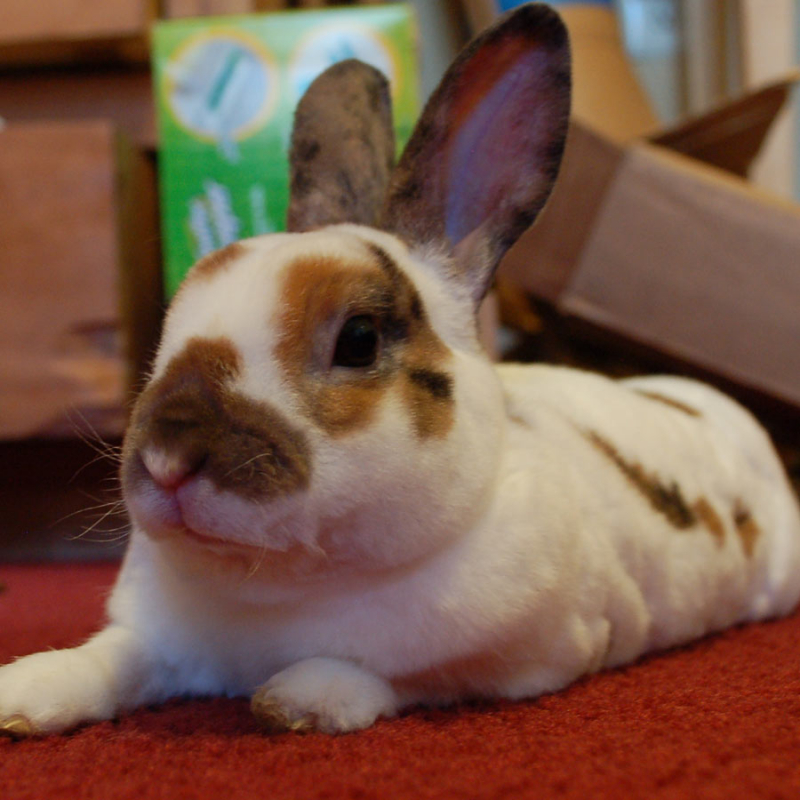
Photo: tthme.com 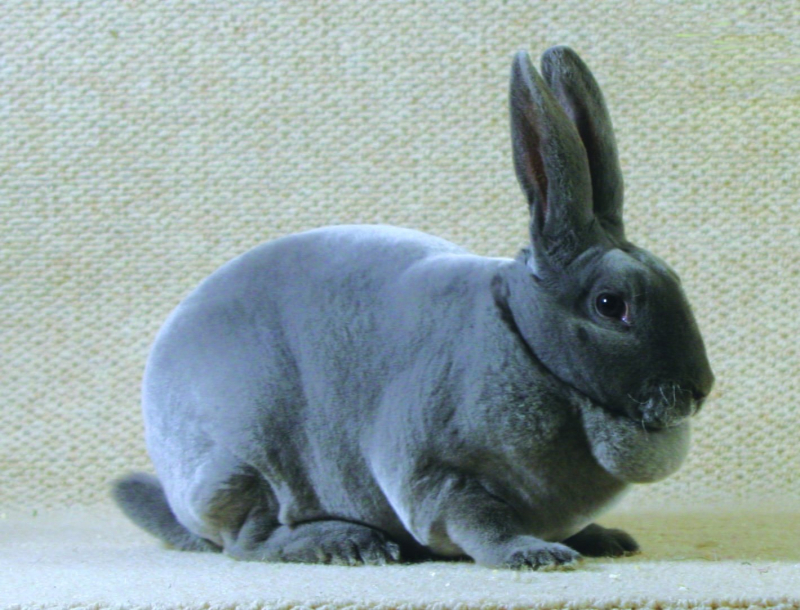
Photo: furandfeather.co.uk -
Through careful breeding, the domestic rabbit breed known as the English Spot was created in England in the 19th century. The English Spot is a medium-sized breed that weighs 5 to 8 pounds on average. It is distinguished by its body patterns, which include a butterfly-shaped snout, eye circles, cheek spots, herringbone, colored ears, and a chain of spots. The English Spot has flyback fur. Seven distinct variants of the breed exist, including black, blue, chocolate, lilac, tortoise, gray, and gold. English Spots have full arches in their bodies and long front legs that enable them to stand up from a table. The most well-known traits of English Spots are their curiosity and sense of humor.
Their two front paws that lift them off the table and reveal the light beneath their bellies are noted for their arched bodies. Well-rounded hips that are a little bit wider than the shoulders are ideal. The hind legs are parallel to the torso and the legs are long and slender. The ears must be upright.
A very friendly rabbit, the English spot enjoys being handled, held, and combed. It thrives when surrounded by people and struggles when left alone. The English spot is a smart creature that likes to pick up new skills. It can be taught to use a litter box, respond to commands, and perform other entertaining acts.
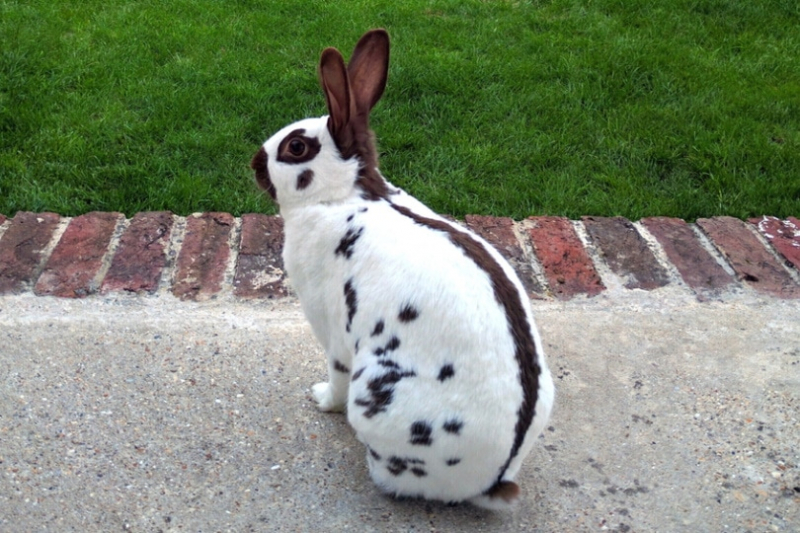
Photo: petkeen.com 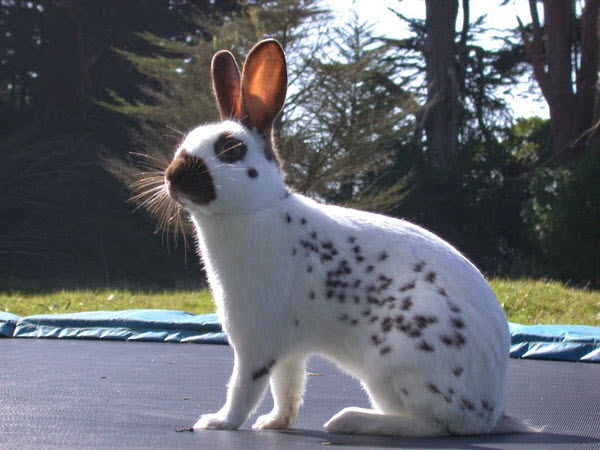
Photo: rabbitbreeders.us -
A domestic breed of rabbit with a bold head and easy-care wool fur, the Jersey Wooly weighs about 3 pounds. They are renowned for their sweet demeanor and docility.
A Jersey Wooly weighs 2.5 to 3.5 pounds at maturity, with 3 lbs. being optimum. They have a slim body build. According to the ARBA Standard of Perfection, 3 inch ears are the longest they can be for display stock. The head and ears of a Jersey Wooly have the most points, which should be made clear while displaying one. The breed is known fondly as the "Mug Head" due to its bold and squarish head. The majority of Jersey Woolys have highly amiable personalities, and these bunnies are quite lively and cuddly. They can be playful explorers or laid-back lap bunnies as pets.
The care and genetics of a Jersey Wooly can affect its lifespan, among other things. When given the right care, a Jersey Wooly frequently lives for 7 to 10 years or longer. There is a widespread misconception that people who have had litter pass away more quickly, however, there is no evidence to support this. Many rabbit breeders report that healthy Jersey Woolies with numerous litters live just as long as Jersey Woolies are kept as pets who have never given birth. It is also thought that spaying and neutering these rabbits will lengthen their lives by many years. Without neutering or spaying, rabbits are susceptible to life-threatening tumors and cancer. The greatest method to reduce surgical problems is to work with a knowledgeable, skilled exotics veterinarian.
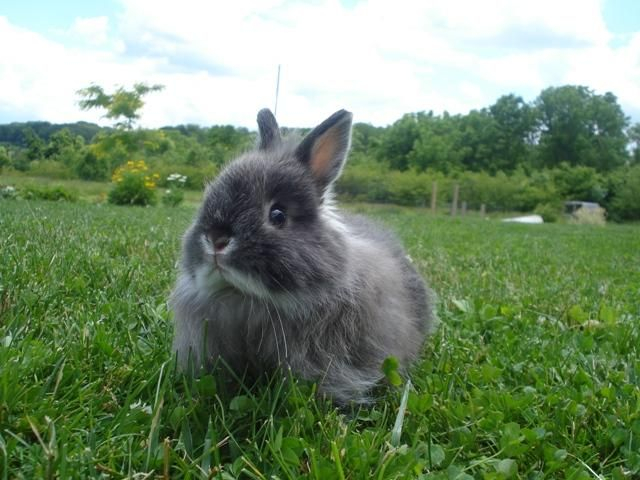
Photo: co.pinterest.com 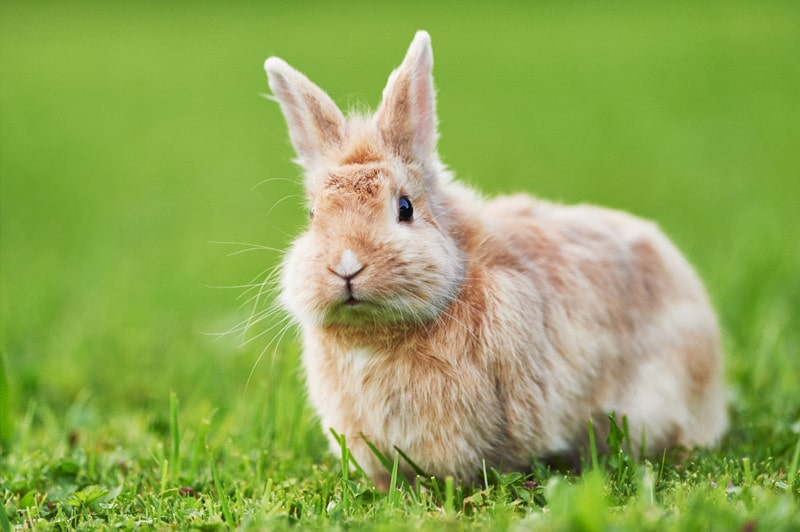
Photo: familylifeshare.com -
One of the earliest kinds of rabbits, Himalayan rabbits have been around for thousands of years. Although their origin is uncertain, it has been determined that they originated in Asia and the Middle East. However, despite what their name says, it is improbable that they originated in the Himalayan mountain range.
Despite being an ancient breed, Himalayans are just recently becoming popular in showing circles. The Himalayan rabbit was originally described in a European publication in 1857, and by the end of the 19th century, Himalayans were being reared in Great Britain for exhibition. The Belgian hare boom, which started in 1898 and saw a sharp rise in the popularity of domestic rabbits, was when the Himalayan was eventually brought to the United States. Himalayan rabbits had started to show up at rabbit events across the nation by the time the boom ended in 1901. It's noteworthy to note that the pelt closely resembled an ermine's, and rabbit breeders rapidly became enamored with it since they could harvest the expensive fur to sell.
Their body is small and compact. Red, white, blue, black, black and tan, chocolate, lavender, and cinnamon are just a few of the many colors that Himalayan rabbits can be. The Himalayan rabbit is one of the most affectionate rabbit breeds in the world.
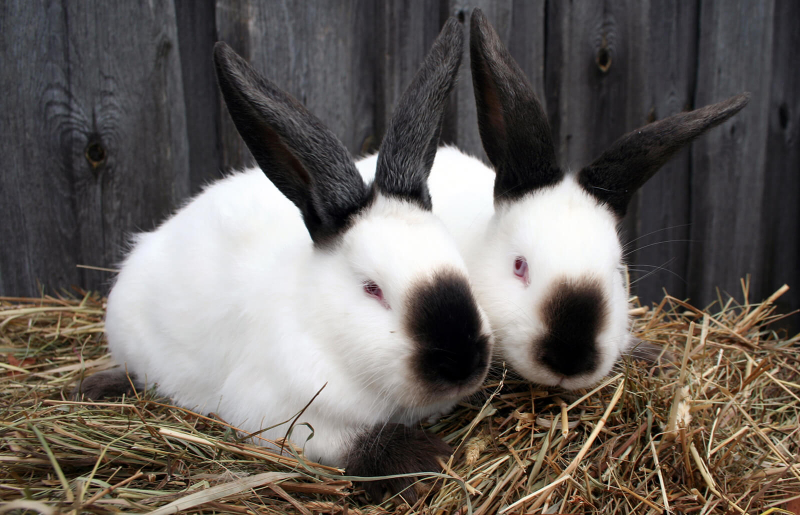
Photo: small-pets.lovetoknow.com 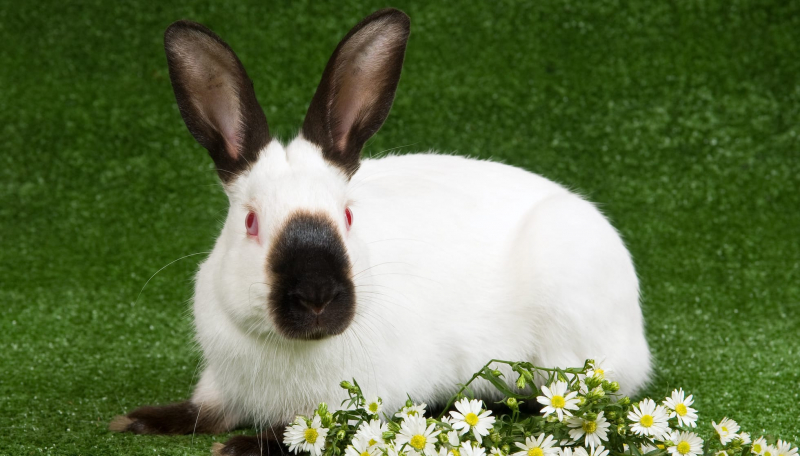
Photo: kidadl.com -
The Havana rabbit breed made its debut in the Netherlands in 1898. The Fee de Marbourg, Perlefee, and Gris Perle de Hal are three breeds that are descended from this one. The American Rabbit Breeders Association recognizes Havanas in five color varieties: chocolate, lilac, black, blue, and broken. Their weight ranges from 4.5 to 6.5 pounds on average.
Their bodies are rounded and short. A half-circle should be formed by the top line as it rises over the hips and falls to the tail. They feature medium-sized eyes, short ears that are quite close together, short, straight legs with dark toenails, and a short head with full cheeks. The short, velvety flyback fur of this type of rabbit requires little upkeep to be in excellent condition. Indoor rabbits can be brushed once a week using a slick brush to minimize shedding, and when shedding season arrives, brushings can be increased to twice weekly.
As long as they are allowed the time and space to properly socialize on their own terms, rabbits are charming animals who quickly form bonds with their human families. Havana rabbits make wonderful pets and show animals because they like having free range of the house or a fenced-in yard. These medium-sized rabbits are fully capable of sprinting around indoors or outside and letting out a small mid-air hop, while not being the most active breed by any means.
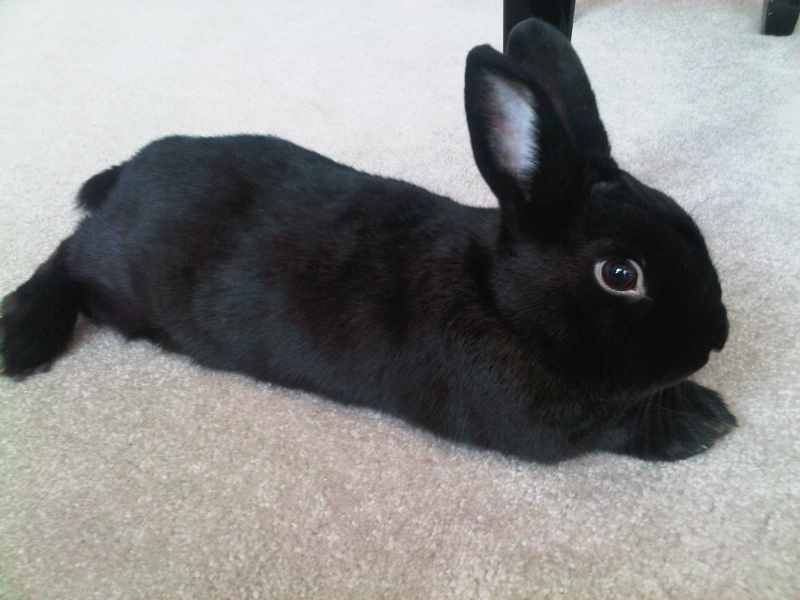
Photo: wikipedia.org 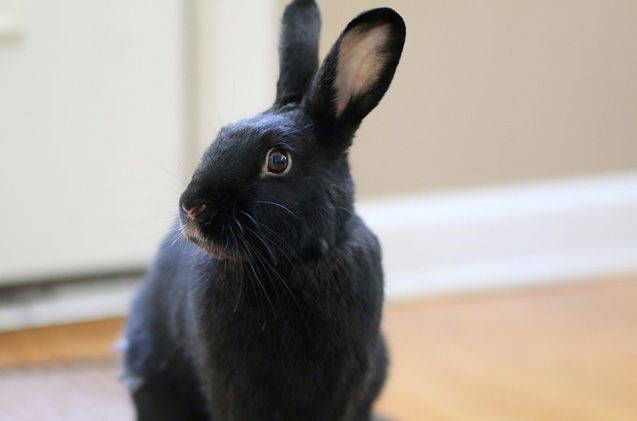
Photo: herebunny.com -
The next position on the list of the most affectionate rabbit breeds in the world is the Standard Chinchilla rabbit. By mating wild rabbits with Beverens and Himalayans, the Standard Chinchilla Rabbit was created in France in 1919. Particularly when it initially came to the United States, where it caused an enormous sensation, its distinctive coat color made it an instant hit. Around the 1920s, hundreds of chinchillas were registered with what would later become the American Rabbit Breeders Association because they were regarded as "the next best thing" to the Belgian Hare (ARBA).
Like most short- to medium-haired rabbits, the Standard Chinchilla has soft, silky fur that doesn't require much grooming to retain it in show-worthy form. Never give your rabbit a bath if their fur gets dirty; instead, wipe the area with a moist cloth. When their molts are not in full swing, grooming should be done every other week; when they are, it should be done every two weeks.
Standard Chinchillas are known to be lovely, docile animals who don't mind being picked up by their owners or by complete strangers as long as it is done carefully. It is more suited for youngsters because it is smaller and simpler to handle and pet than the American or Giant Chinchilla. Additionally, because of its size, it makes a great pet for people who live in homes or apartments.
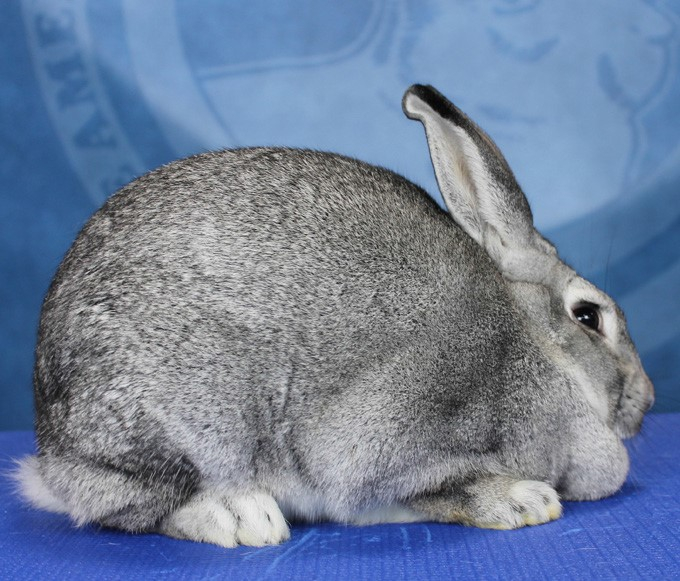
Photo: livestockconservancy.org 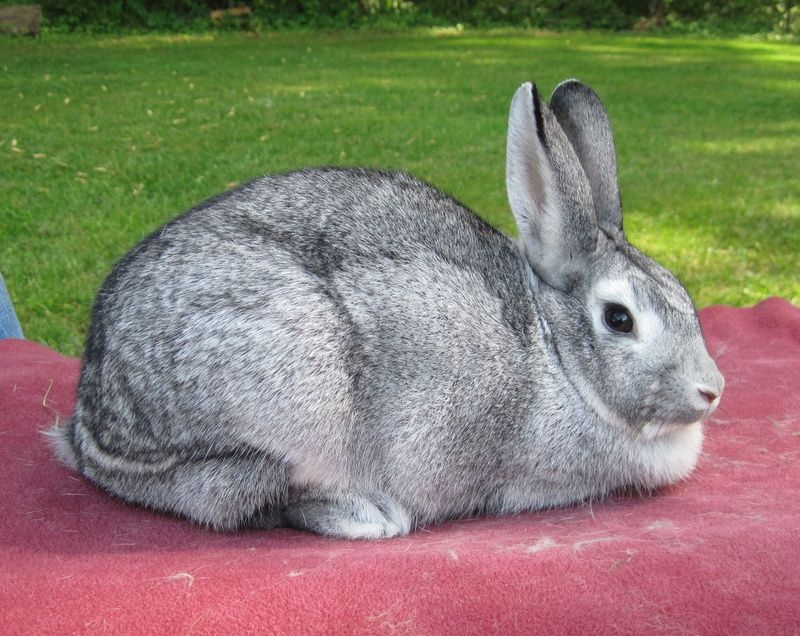
Photo: tthme.com












